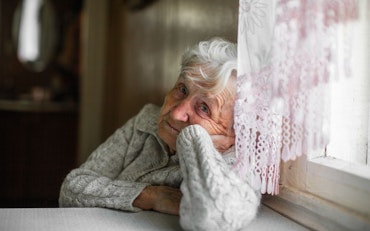ROYAL COMMISSION: Too many “potholes” in consumer journey
Day two of the Royal Commission into Aged Care Quality and Safety hearings in Adelaide brought concerns around malnutrition, consumer gateway flaws and rise of dementia deaths to the forefront.
- Dementia ,
- Elder Abuse ,
- Government ,
- Providers ,
- Workforce

Older Persons Advocacy Network (OPAN) Chief Executive Craig Gear gives evidence yesterday.
The Combined Pensioners and Superannuants Association (CPSA) of NSW Policy Coordinator Paul Versteege says the current care model was flawed because it relied on staff to self report assault cases.
“In many facilities they are not even recorded and we can assume that it happens a lot,” he says.
“If you had more staff in residential aged care sectors there wouldn’t be as many assaults. There wouldn’t be a stress, there would be more social control.”
Mr Versteege highlights malnutrition, a lack of space and a shortage of vital supplies as chronic issues in the system.
“Rates of 50 percent malnutrition in residential aged care facilities are very common,” he says. “We are talking about people who have moved into care and are still malnourished — that is a very obvious breach of safety.
“In nursing homes it’s quite common for continence pads to be rationed, that is the anecdotal evidence we hear from nurses.
“In home care, people have trouble accessing very basic equipment, like a wheelchair.”
Dementia deaths on the rise
Health and Disability Branch Program Manager at the Australian Bureau of Statistics Justine Louise Boland says the percentage of the Australian population aged over 85 was expected to double by 2066.
She says dementia was likely to become the leading cause of death for people in the over-85 age group by 2020, overtaking heart disease.
“At the moment it’s become the leading cause for women,” she says.
Ms Boland says census data also shows a number of people aged 65-74 are still providing unpaid care to others.
“Approximately 17 and a half percent of all females in that age range have reported that they’re providing unpaid assistance to a person either with a disability or problems associated with age or with a health condition,” she says.
Different approach needed for consumer gateway
Older Persons Advocacy Network (OPAN) Chief Executive Craig Gear says the organisation had seen psychological, physical and financial abuse of older people in the aged care sector and was running educational programs in response.
Mr Gear says OPAN was receiving up to 240 calls a week from people concerned about the current home care waiting times.
“I have heard of a number of cases where people have been waiting on that home care waiting list, for the right level of care, and they have passed away before that care was able to be accessed, which is really distressing,” he says.
Mr Gear also flagged his concerns with the My Aged Care consumer gateway, saying it has not resolved a number of access issues.
He says there are many “potholes” along the consumer journey through the aged care system, such as knowing what services are available, getting the right type of assessment and the gap between assessment and receiving supports.
“In addressing what (My Aged Care) has helped, it has brought information together into one area, and has provided a consistent pathway in for all types of aged care,” he says.
“The challenge is it only works for people who…have access to IT infrastructure, can use the telephone system or can wait on the telephone as well.”
Mr Gear says the consumer gateway doesn’t work well for remote communities, homeless people or those with mental health issues; something he hopes the Government’s aged care system navigator trial, announced in it’s $662m funding boost, will help solve.
“We need a different approach for those types of populations,” he says. “I think the need to have a face-to-face or additional types of supports that supplement My Aged Care is really important.”
Mr Gear says there’s an “understandable” lack of trust in Government services among some remote Indigenous communities.
“We need to probably look at different models which might be using Aboriginal health workers or community members to be part of that care team as well, but it’s a challenge right across (regional and remote) Australia,” he says.
“The challenge is we haven’t been resourced… appropriately for those outreach-type models but they’re very, very important so that all Australians understand the aged care system and their access to it.”
Representatives from Australian and New Zealand Society for Geriatric Medicine, Australian College of Nursing, Australian Nursing and Midwifery Federation will give evidence today.










